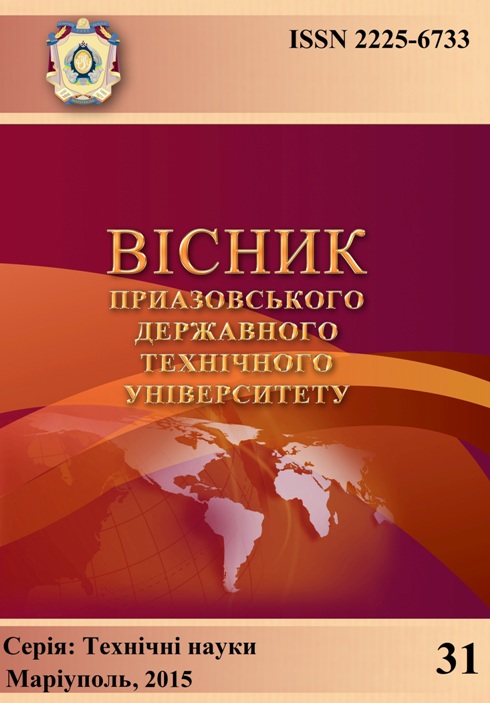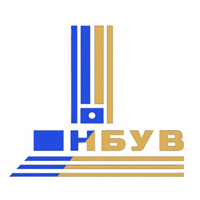Interatomic interaction of additive elements and their influence on the processes in the double metal solutions
DOI:
https://doi.org/10.31498/2225-6733.31.2015.70020Keywords:
trace elements, electronegativity, interatomic bondAbstract
Modern industry uses a lot of elements as additives to improve the service characteristics of metal products that are to be used for various purposes. These elements can be divided into two groups: the first group includes the elements interacting with iron and improving its characteristics (alloying elements), and the second group includes the elements, that modify the characteristics of the structure and properties in an undesirable direction. These are trace elements: S, P, O, As, and others in steel. The negative impact of these elements shows itself as banding, the formation of non-metallic inclusions, flakes, grain boundary segregations et al. The influence of the elements of the both groups on the properties of steel depends on the nature and level of interatomic interaction in the alloy. Computational and analytical study of the major impurity elements in steel impact on the interatomic bond strength and the probability of forming complexes, clusters, and chemical compounds with the basic alloying elements in the steel has been carried out in the work. The theoretical parameter which defines the strength of the ion-covalent bond of two atoms: non-metallic – metallic is the electronegativity of elements. The electronegativity difference of the metal and non-metallic elements increasing, the ionic bonding and thermodynamic stability of these compounds increase. On the other hand, concentration of valent electrons is a universal characteristic of an atomic element which determines many of its properties, and especially the energy of interatomic interaction. Energy calculations of pairwise interatomic impurity elements: H, C, N, S, P, As interaction with Fe and major alloying elements in steel: Mn, Cr, Si, V, Al, Ti, W, Cu, Mo, Nb were made. It has been stated that all the impurity elements except phosphorus, hydrogen and arsenic have sufficient high adhesion with the majority of the metal elements in the modern steels. Phosphorus does not form stable compounds with metals, but has a tendency to form grain boundary segregation (GBS). Niobium, molybdenum and titan change the nature of phosphorus distribution in steel and prevent GBS. Carbon, nitrogen and sulfur are impurity elements having higher energy of ion-covalent interaction with the main metals in steel, therefore tend to form clusters, complexes and chemical compoundsReferences
McLean D. Grain boundaries in metals / D. McLean. – Oxford: Clarendon Press, 1957. – 346 p.
Seah M.P. Segregation and the strength of grain boundaries / M.P. Seah, E.D. Hondros // Proc. Roy Soc. – A.349. – London, 1976. – P. 535-554.
J. du Plessis. A model for surface segregation in multicomponent alloys / J. du Plessis, G.N. van Wyk // Physics and Chemistry of Solids. – 1989. – Vol. 50. – P. 247-250.
Взаимодействие атомов примесных и легирующих элементов с поверхностью зерен в стали / В.И. Колесников, Ю.Ф. Мигаль, В.Н. Доронькин, Е.С. Новиков, И.В. Колесников // Вестник южного научного центра РАН. – 2012. – Т. 8. – № 4. – С. 27-33.
Seah M.P. Adsorption-induced interface decohesion / M.P. Seah //Acta Metallurgica. – 1980. – Vol. 28. – P. 955-962.
Guttmann M. Thermochemical interactions versus site competition in grain boundary segregation and embrittlement in multicomponent systems / M. Guttmann // J. de Physique IV. – 1995. – Vol. 5. – P. 85-96.
Внутризеренная поляризация электронного заряда в металлах и ее влияние на зернограничную сегрегацию примесных элементов / Н.В. Ткаченко, М.А. Рябикина, Ф.К. Ткаченко, В.И. Мирошниченко // Вісник Приазовського державного технічного університету : Зб. наук. пр. / ПДТУ. – Маріуполь, 2011. – Вип. № 23. – С. 102-106.
Downloads
How to Cite
Issue
Section
License
Journal "Reporter of the Priazovskyi State Technical University. Section: Technical sciences" is published under license CC-BY (License "Attribution").This license allows you to distribute, edit, correct and take work as a basis for derivatives, even on a commercial basis with an indication of authorship. It is the most convenient of all the proposed license. Recommended for maximum dissemination and use of licensed materials.

Authors who publish in this journal agree to the following terms:
1. The authors reserve the right to authorship of his work and pass the journal right of first publication of the work under the terms of Creative Commons Attribution License, which allows others to freely distribute the work published with the obligatory reference to the authors of the original work and the first publication of the work in this journal.
2. The authors have the right to enter into separate supplemental agreements relating to the non-exclusive dissemination of works in the form in which it was published in the journal (for example, to place the work in the institution, or to publish a monograph as part of an electronic store), while maintaining links to the first publication of the work in this magazine.








